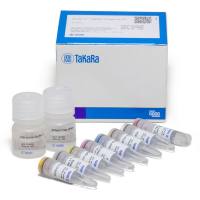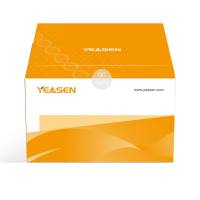A Simplified Method of Screening for Isolation of Recombinant Vaccinia Virus
互联网
1017
The utility of a recombinant vaccinia virus expression system for transient expression of genes was demonstrated in 1982 (1 ,2 ). Among a number of useful characteristics of this expression system are the capacity of the vaccinia virus genome to accommodate large genes (>20 kb pairs), availability of insertional sites on the viral genome yielding viable recombinant viruses, ability of the vaccinia virus to infect a wide range of mammalian hosts, cytoplasmic transcription and replication of the viral genome unlike many other expression systems, a relatively high level of recombinant proteins produced in infected cells, and the primary sequence-directed posttranslational modifications of recombinant proteins aim to native proteins (for a review, see ref. 3 ). As a first step in the construction of a recombinant vaccinia virus, the gene encoding a protein in the form of a cDNA is cloned into a plasmid vector under the control of an early or late vaccinia virus promoter (4 –6 ), or a bacteriophage T7 promoter/the encephalomyocarditis virus 5′-untranslated leader sequence which would allow a cap independent mechanism of translation of the transcripts (7 ). Flanking the gene chosen for expression are DNA sequences representing portions of a nonessential viral gene such as that encoding the thymidine kinase in order to allow homologous recombination at the locus of the viral gene in vivo (6 ). The frequency with which the gene is integrated into the viral genome has been estimated to be about 0.1% (for a review, see ref. 3 ). In the original protocol for the isolation of a recombinant vaccinia virus (6 ), cell monolayers are infected with the wild-type virus (WR strain) and transfected with the plasmid DNA encoding the gene of interest. Since insertion of the gene of interest at the viral thymidine kinase (TK) gene locus results in recombinant viruses with the TK− phenotype, plaque isolates of recombinant viruses are selected in the presence of 5-bromodeoxyuridine (5-BrdU). The conditions chosen for selection in the presence of this analog of thymidine are lethal to replication of the wild-type virus owing to incorporation of the phosphorylated form into the viral genome, but not to the recombinant virus deficient in TK. The cell lysates containing the wild-type and recombinant viruses at appropriate dilutions are used to infect cell monolayers of human TK− cells, and then overlaid with growth medium containing agarose and 5-BrdU to prevent spreading of recombinant virus plaques and inhibit replication of the wild-type virus, respectively. A second agarose overlay containing the 5-BrdU and the neutral red stain is used to enable one to visualize recombinant virus plaques (6 ). A single plaque results from a productively infected cell and the cell-to-cell spread of the virus, and an agarose overlay localizes each of these plaques on a mono-layer. Since a plaque could consist of either a recombinant virus or a spontaneous TK− mutant virus often present as a contaminant in the cell lysates, a suitable hybridization technique is employed in the screening protocol for isolation of recombinants (6 ).








